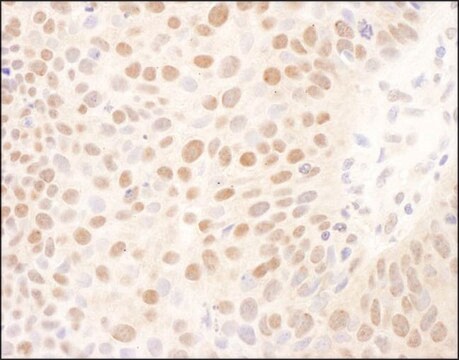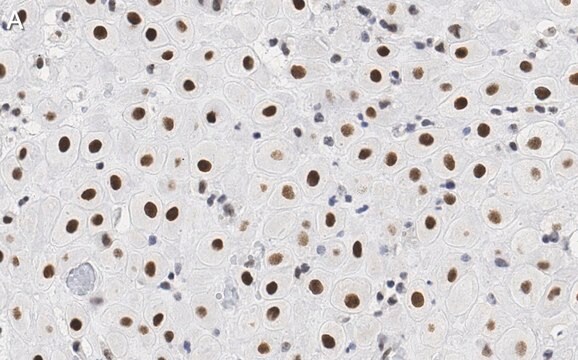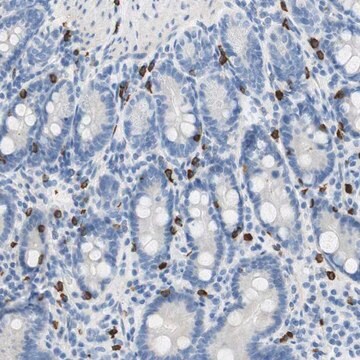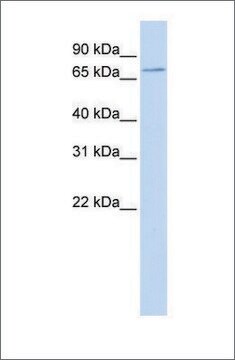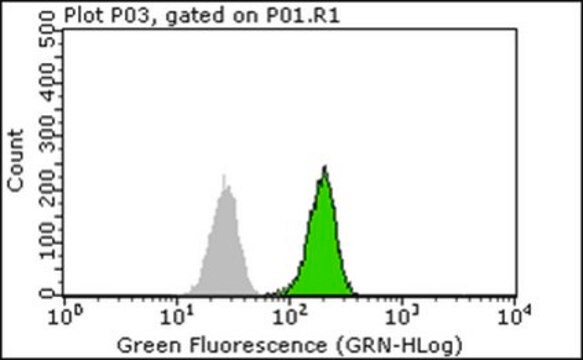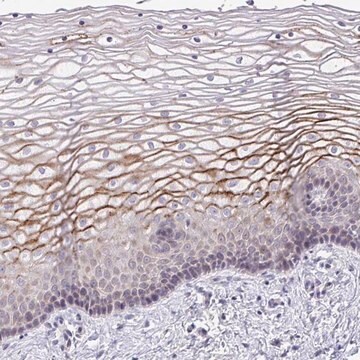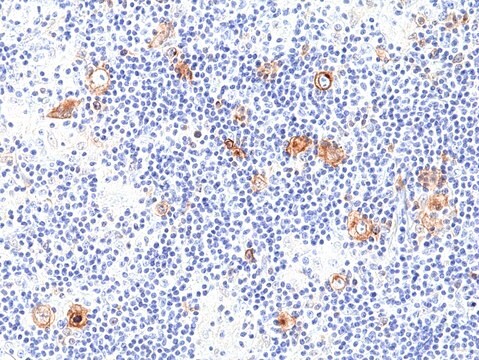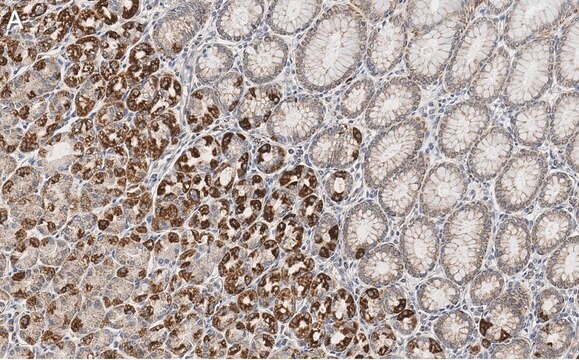SAB4200034
Anti-BMI1 (C-terminal) antibody produced in rabbit
~1.0 mg/mL, affinity isolated antibody, buffered aqueous glycerol solution
别名:
Anti-B lymphoma Mo-MLV insertion region 1 homolog, Anti-PCGF4, Anti-Polycomb group RING finger protein 4, Anti-RNF51, Anti-Ring finger protein 51
About This Item
推荐产品
生物源
rabbit
共軛
unconjugated
抗體表格
affinity isolated antibody
抗體產品種類
primary antibodies
無性繁殖
polyclonal
形狀
buffered aqueous glycerol solution
分子量
antigen ~37 kDa
物種活性
human
包裝
antibody small pack of 25 μL
濃度
~1.0 mg/mL
技術
immunoprecipitation (IP): 2.5-5 μg using lysates of HEK-293T cells over expressing human BMI1
indirect immunofluorescence: 1-2 μg/mL using paraformaldehyde fixed HEK-293T cells over expressing human BMI1
western blot: 2-4 μg/mL using lysates of HEK-293T cells over expressing human BMI1
UniProt登錄號
運輸包裝
dry ice
儲存溫度
−20°C
目標翻譯後修改
unmodified
基因資訊
human ... BMI1(648)
一般說明
應用
- western blotting
- immunoprecipitation
- immunofluorescence
生化/生理作用
外觀
免責聲明
未找到合适的产品?
试试我们的产品选型工具.
儲存類別代碼
10 - Combustible liquids
閃點(°F)
Not applicable
閃點(°C)
Not applicable
我们的科学家团队拥有各种研究领域经验,包括生命科学、材料科学、化学合成、色谱、分析及许多其他领域.
联系技术服务部门